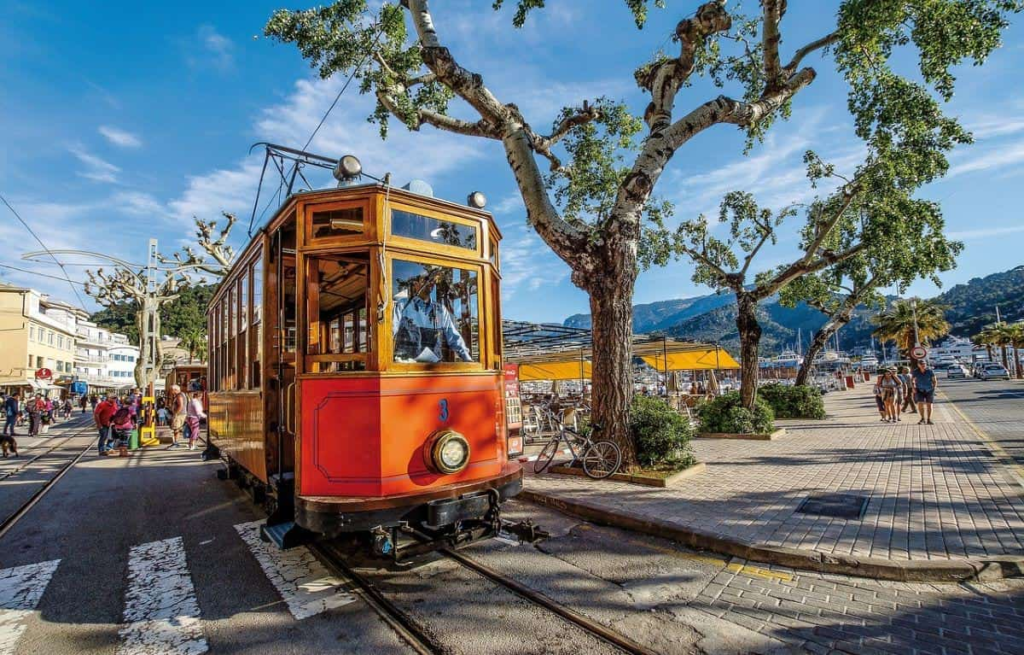Spain is one of Europe’s most popular travel destinations, offering an exciting mix of vibrant cities, historic architecture, stunning beaches, and rich cultural experiences. However, it’s important to understand the costs associated with visiting the country. This article will break down all the key expenses you’ll encounter, including flights, accommodation, food, transportation, and activities, to give you a clear picture of how much it costs to visit Spain.
Flights to Spain

The first major cost to consider when planning a trip to Spain is your flight. The price of airfare can vary greatly depending on your departure location, the time of year, and how far in advance you book. If you’re flying from major cities in the United States or Canada, expect round-trip flights to range from $400 to $1,000 USD, with flights from the East Coast (like New York) generally being cheaper than those from the West Coast (like Los Angeles). From European countries, particularly neighboring ones like France or Germany, flights are significantly cheaper, often ranging from €50 to €200 on budget airlines like Ryanair or Vueling.
It’s worth keeping in mind that flight prices can fluctuate based on the season. The high season, from June to August, tends to have the most expensive flights, while the shoulder seasons of spring (April to May) and fall (September to October) often offer lower prices.
Keep reading: 7 Best Foods in Spain: Flavor and Tradition
Hotels in Spain

Accommodation in Spain can cater to all budgets, from luxury hotels to budget hostels and Airbnb options. The average cost of accommodation depends on the city, the type of accommodation, and the time of year you visit.
- Budget travelers can find dormitory-style rooms in hostels for as low as €15 to €30 per night, especially in less tourist-heavy cities.
- Mid-range travelers can expect to pay between €50 and €120 per night for a double room in a three-star hotel or an apartment through Airbnb.
- Luxury travelers can enjoy five-star hotels and resorts, particularly in cities like Madrid or Barcelona, where nightly rates range from €200 to €500 or more.
It’s important to remember that accommodation prices in popular tourist destinations like Barcelona, Madrid, and the Costa del Sol are generally higher than in smaller towns or less touristy areas. During the peak summer season, prices can increase significantly, so booking well in advance can help secure better rates.
Read also: 7-Day Planing for Visiting Spain
Food and Drink Costs in Spain

Spain is a paradise for food lovers, with its world-famous tapas, fresh seafood, and diverse regional cuisine. Fortunately, eating in Spain can be affordable, especially if you dine like a local and take advantage of set menus, street food, and tapas bars.
- Budget travelers can eat at local cafes and tapas bars for around €10 to €15 per meal. A typical “menu del día” (menu of the day), which includes a starter, main course, dessert, and drink, can cost as little as €12 to €20 at lunchtime.
- Mid-range travelers can expect to spend €25 to €40 per meal at a sit-down restaurant, particularly in tourist areas.
- Luxury travelers dining at high-end restaurants can easily spend €50 to €100 or more per person for a multi-course meal, especially at Michelin-starred establishments.
For drinks, a glass of wine or beer at a local bar usually costs between €2 and €4, while a coffee will set you back about €1.50 to €3, depending on the region. If you’re a fan of Spanish wine, you’ll be pleased to know that a good bottle from a grocery store can be as cheap as €5.
Transportation Costs in Spain

Getting around Spain is relatively easy and affordable, thanks to its well-developed transportation network that includes trains, buses, and domestic flights. The cost of transportation will depend on how much of the country you plan to explore and the mode of transport you choose.
- Public Transportation: Spain’s cities have excellent public transportation systems. A single metro or bus ticket in cities like Madrid or Barcelona typically costs around €1.50 to €2.50, while a 10-ride ticket (called a T10 or Bono) can reduce the per-trip cost to as low as €1. A day pass for unlimited travel usually costs €5 to €10, making it a great option for travelers who plan to use public transport extensively.
- Intercity Trains: Spain’s high-speed AVE trains connect major cities like Madrid, Barcelona, Seville, and Valencia. Prices for AVE tickets can range from €25 to €100, depending on the distance, class of service, and how early you book. Slower regional trains and buses are more budget-friendly, with fares ranging from €10 to €40 for longer journeys.
- Domestic Flights: If you’re traveling between distant cities, such as from Madrid to the Canary Islands or from Barcelona to Malaga, a domestic flight may be more convenient. Budget airlines often offer flights for as little as €30 to €80, though prices can increase during peak travel times.
Attractions and Activities

Spain is rich in history, culture, and natural beauty, with countless attractions to suit every type of traveler. From world-class museums and ancient cathedrals to beach activities and mountain hikes, the costs of attractions vary depending on your interests.
- Museums and Historical Sites: Entrance fees to major attractions like the Alhambra in Granada, Sagrada Família in Barcelona, or the Prado Museum in Madrid generally range from €10 to €25. Many museums offer free entry on certain days, often on Sundays or public holidays, so it’s worth checking in advance if you’re on a budget.
- Tours and Excursions: Guided tours and excursions vary widely in price. A half-day walking tour in a major city might cost around €30 to €50, while a full-day trip to a nearby town or nature reserve can range from €70 to €150, depending on the location and inclusions.
- Outdoor Activities: Spain’s diverse landscape offers plenty of outdoor activities, from hiking in the Pyrenees to surfing in the Basque Country. Most hiking trails are free to access, while activities like kayaking, paragliding, or guided hikes typically cost between €30 and €100.
Miscellaneous Costs

In addition to the major expenses listed above, there are other costs to keep in mind when budgeting for your trip to Spain.
- Travel Insurance: It’s always a good idea to purchase travel insurance before heading abroad. A basic travel insurance policy that covers medical emergencies, trip cancellations, and lost luggage typically costs around €30 to €60 for a two-week trip, depending on the level of coverage.
- Tipping: Tipping is not as common in Spain as it is in other countries like the United States, but it’s appreciated for good service. A tip of 5-10% is appropriate at restaurants, though locals often just round up the bill. In taxis, rounding up to the nearest euro is also customary.
- Souvenirs and Shopping: The cost of souvenirs and shopping depends on where you go and what you buy. Handmade ceramics, leather goods, and wine are popular souvenirs, with prices ranging from €5 to €50, depending on the item.
Daily Travel Budget in Spain

To give you a better sense of how much it costs to visit Spain, here’s a breakdown of typical daily travel budgets based on different travel styles:
- Budget Travelers: If you’re a budget traveler staying in hostels, eating at inexpensive cafes, and using public transportation, you can expect to spend around €50 to €70 per day. This budget allows for basic accommodation, public transport, and affordable meals but leaves little room for splurging on activities or fine dining.
- Mid-range Travelers: For travelers looking for a bit more comfort, staying in mid-range hotels, eating at local restaurants, and visiting popular attractions, a daily budget of €100 to €150 is more realistic. This includes accommodation in three-star hotels, meals at moderately priced restaurants, and tickets to major attractions.
- Luxury Travelers: If you prefer staying in luxury hotels, dining at upscale restaurants, and taking guided tours or excursions, expect to spend €200 to €400 or more per day. This budget allows for five-star accommodations, fine dining experiences, and private tours.
Seasonal Cost Variations

It’s important to consider that prices for flights, accommodation, and even some activities can vary depending on the time of year. The high season in Spain is during the summer months, from June to August, when prices for accommodation and flights are at their peak due to the influx of tourists. If you’re looking to save money, consider visiting during the shoulder seasons of spring or fall, when the weather is still pleasant but prices are lower, and tourist crowds are smaller.
Final Thoughts: Planning Your Trip to Spain
Spain offers a diverse range of experiences, from bustling cities and beautiful beaches to historic landmarks and cultural festivals. How much your trip costs will largely depend on your travel style, the places you choose to visit, and how you manage your budget. Whether you’re a backpacker or a luxury traveler, Spain has something to offer everyone, and with a little planning, you can tailor your trip to fit your budget.
By understanding the various costs involved—flights, accommodation, food, transportation, and activities—you can make informed decisions and ensure that your visit to Spain is both enjoyable and financially manageable.
Read more: 10 Days in Spain: A Full Detailed Planing











